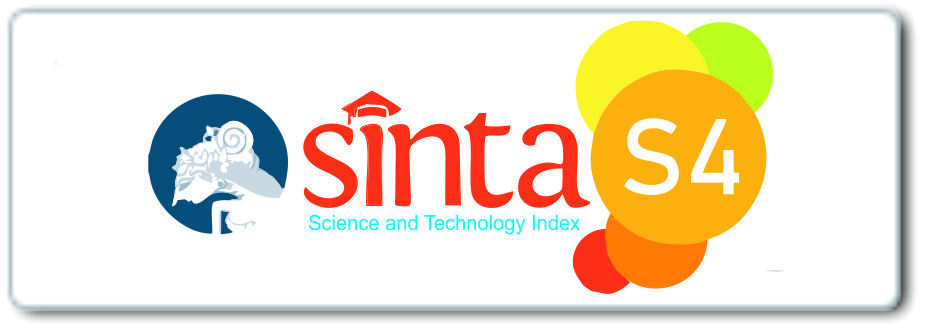A STUDY ON INTERACTIVITY IN COMPUTER ASSISTED LANGUAGE LEARNING (CALL) BASED FOR LANGUAGE LEARNING
DOI:
https://doi.org/10.33375/vslt.v7i1.1079Keywords:
3d gaming environment, computer assisted language learning, interfaceAbstract
Pembelajaran bahasa terus ditingkatkan seiring dengan perkembangan teknologi. Computer Assisted Language Learning (CALL) adalah area penelitian yang berfokus pada pengembangan alat untuk meningkatkan proses pembelajaran bahasa. Jurnal ini bermaksud untuk mendiskusikan konten, interface dan sistem dari tiga game pembelajaran bahasa berbasis CALL dengan 3D gaming environtment untuk menemukan desain game pembelajaran berbasis CALL yang lebih baik. Untuk memahami konsep CALL lebih baik, penulis mencari dasar-dasar dari CALL, kemudian bergerak ke pembahasan tiga game berbasis CALL. Kombinasi dari teori CALL, pembahasan interface dan desain interaksi akan menghasilkan analisis masalah dari desain game berbasis CALL ini dan bagaimana caranya agar game-game pembelajaran tersebut bisa menjadi lebih baik lagi.
Downloads
References
Amoia, M., Brétaudiere, T., Denis, A., Gardent, C., & Perez-Beltrachini, L. (2012). A Serious Game for Second Language Acquisition in a Virtual Environment. Journal on Systemics, Cybernetics and Informatics (JSCI), 10(1), 24-34.
Canning, J. (2004). "Disability and residence abroad." Subject Centre for Languages, Linguistics and Area Studies Good Practice Guide. Retrieved 7 October 2008, from http://www.llas.ac.uk/resources/gpg/2241.
Davies, G.D. (1991). Expodisc - an Interactive Videodisc Package for Learners of Spanish. In H. Savolainen & J. Telenius (eds), EUROCALL 91: Proceedings, 133-39. Helsinki: Helsinki School of Economics. Available at: http://www.camsoftpartners.co.uk/expodisc.htm.
Felix, U. (2001). Beyond Babel: Language Learning Online. Melbourne: Language Australia. Reviewed athttp://www.camsoftpartners.co.uk/FelixReview.htm.
Fuerstenberg, G. (1993). A la rencontre de Philippe: Videodisc, Software, Teacher's Manual and Student Activities. Yale University Press. See also http://web.mit.edu/fll/www/projects/Philippe.html.
Leng, J., Rhyne, T., & Sharrock, W. (2012). Visualization: Future Technology and Practices for Computational Science and Engineering. In J. Leng, & W. Sharrock (Eds.) Handbook of Research on Computational Science and Engineering: Theory and Practice (pp. 381-413). Hershey, PA: Engineering Science Reference. doi:10.4018/978-1-61350-116-0.ch016.
Levy M. (1997). CALL: context and conceptualisation, Oxford: Oxford University Press..
Matthews, C. (1994). Intelligent Computer Assisted Language Learning as Cognitive Science: The choice of Syntactic Frameworks for Language Tutoring. Journal of Artificial Intelligence in Education 5, 4:533-56.
McDonagh, D., Bruseberg, A., & Haslam, C. (2002). Visual product evaluation: exploring users’ emotional relationships with products. Applied Ergonomics,33(3), 231.
Schneider, E.W. & Bennion, J.L. (1984). Veni, Vidi, Vici, via Videodisc: A Simulator for Instructional Courseware. In D.H Wyatt (ed.) Computer Assisted Language Instruction 41-6. Oxford: Pergamon.
Silva, André, et.al. (2012). REAP.PT Serious Games for Learning Portuguese. Instituto Superior T´ecnico, Universidade T´ecnica de Lisboa, Lisboa, Portugal. Taken from : http://www.inesc-id.pt/pt/indicadores/Ficheiros/8092.pdf.
Warschauer M. & Healey D. (1998) "Computers and language learning: an overview", Language Teaching 31: 57-71.
Wik, P., & Hjalmarsson, A. (2009). Embodied conversational agents in computer assisted language learning. Speech communication, 51(10), 1024-1037.
Downloads
Published
Issue
Section
License
Authors who publish with Visualita agree to the following terms:
- Authors retain copyright and grant the journal right of first publication with the work simultaneously licensed under a Creative Commons Attribution-NonCommercial 4.0 International License.
- Authors are able to enter into separate, additional contractual arrangements for the non-exclusive public distribution and display of the journal's published version of the work (e.g., post it to an institutional repository or publish it in a book), with an acknowledgement of its initial publication in this journal.
- Authors wishing to include items (such as images or other media, or any creative works of others whether previously published or not) must contact the original copyright holder to obtain explicit permission to publish these items in Visualital. Writing permission should include: the title(s) of any copyrighted work, original place of publication if applicable, and an acknowledgement of having read Visualita copyright notice. Authors are responsible for obtaining this permission and keeping it in their own records for later verification.





